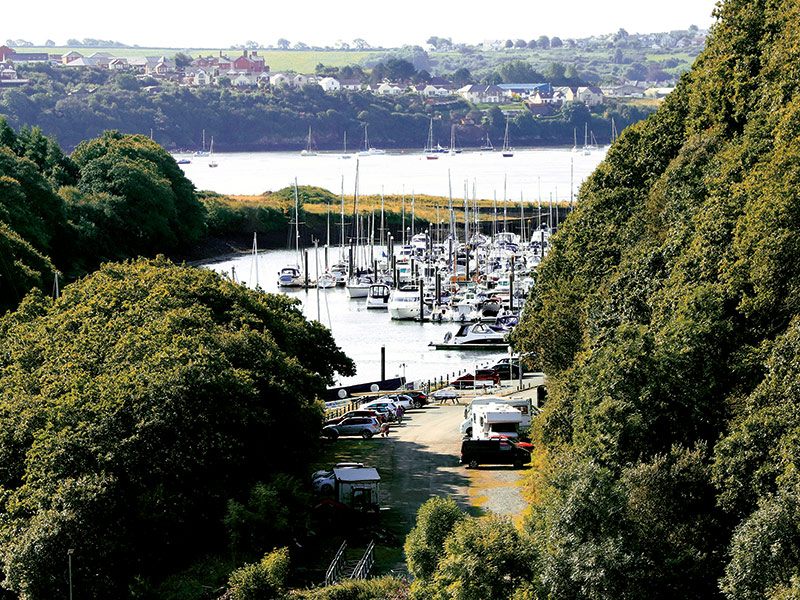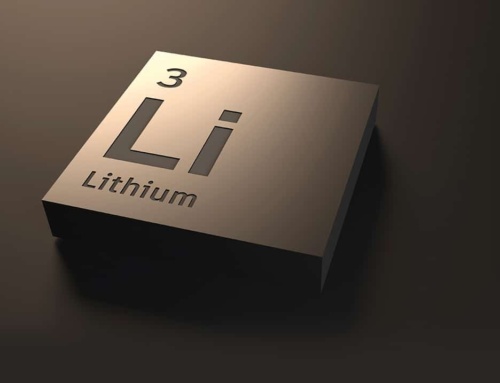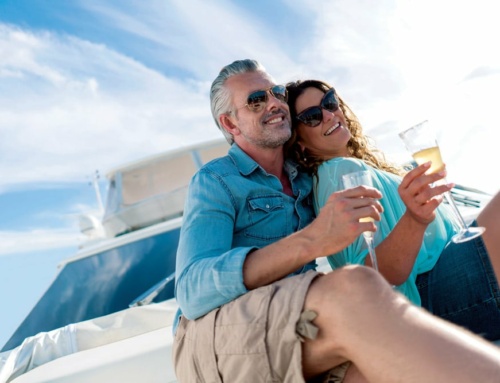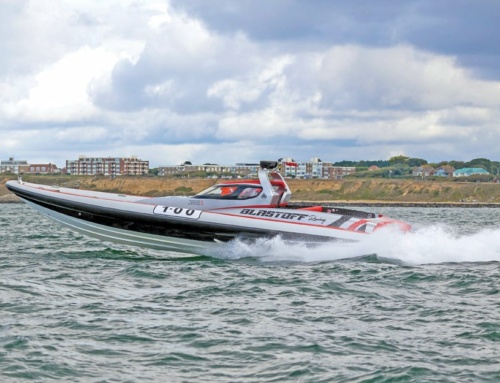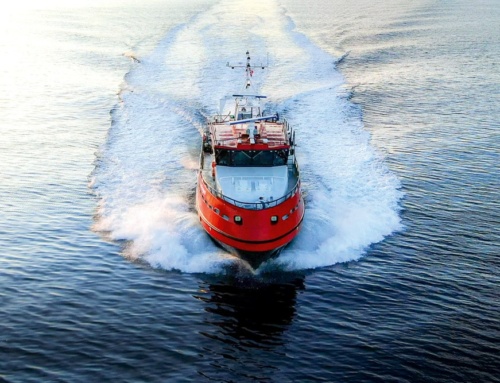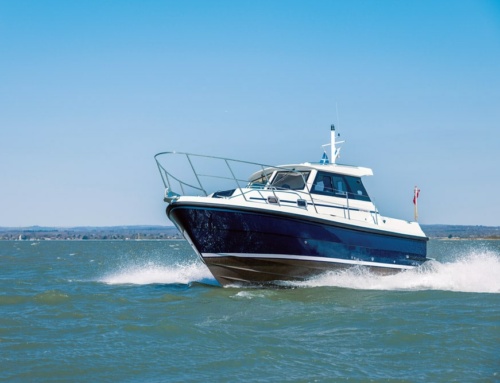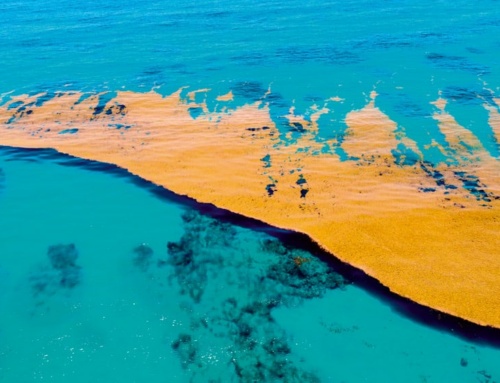- The truth is, a quick powerboat is very exhilarating on a fast coastal passage in winter.
- I adore being out in an open-cockpit boat in the hard weather.
- I much prefer being on the water without the encumbrance of a pilot house, radar arch or hard top.
- Being a sad anorak, I find it really satisfying standing on the back deck just listening to the low rumble of the MerCruiser V8 on idle.
- A pêche promenade-style boat may protect you from the weather, but it insulates you from the cosmos.
Alex Whittaker begins his new column dedicated to just loving your boat.
Outwardly I look quite normal. Well, normal-ish. I work, I pay my taxes and I have a loving family. Occasionally I sip a bit of red wine. However, that is all a cover. Essentially, I’d rather be boating. While other people prefer following millionaire footballers with dodgy barnets, I prefer the company of boats. When it comes to boats I’m not fussy. I never met a boat I didn’t like. Even if the boat is a bit careworn, tired or unkempt, as long as she floats, I am happy. Boat ownership is much more emotionally significant than owning a house, a car or an overdraft. My little boat is my refuge, my compact personal space and a means to escape the absurdities of modern life. However, like a high-maintenance girlfriend, a boat needs constant care and attention. I call this ‘boat bonding’.
Bonding aboard
Besides our family cruising adventures at home and in the Med (well documented here in PBR), I aim to spend some part of each month, winter or summer, aboard my boat. I have discovered that if you sort out your priorities in life, you can make time for your boat. Also, it is surprising how small a boat you can live aboard for short spells. Besides our two Brexit dinghies (one hard and one very soft), we have always bought trailer boats that afforded at least some accommodation. Both our two previous sports boats, an 18-footer and a 21-footer, had tiny cuddies with no galley. However, both were big enough to camp aboard in winter and in summer. Once I had sorted out a marina pontoon berth and mains electricity aboard, all was well. Power means heat, light and cooking, so that was that. Developing this theme, our current boat is an affordable second-hand Bayliner 245 sports cruiser. She has our much-preferred open cockpit, as well as berths for four and all the comforts of a pocket cruiser. She also has a chunky MerCruiser petrol V8 under the back deck. This means that she handles more like a sports boat than a tubby motor boat.
Off season
The other night I was aboard alone. Getting to sleep was difficult. The wind and the tide were turbulent. If I had not been tucked up in the deck-level rear berth, I would have been thrown out of my bunk. It was a rough night, dog rough, and the pontoon was heaving. Overhead the winds howled, and yacht halyards slapped like the rigging on a Cape Horner. Even though I had four extra fenders out, the boat butted and snubbed the pontoon all night. The second mini-hurricane-cum-tropical storm of winter 2017 was ripping through our small North Wales marina. It was accompanied by a tidal surge, heavy rain and very nasty winds. A few of us dotted around the marina were attempting to kip aboard our boats as the storm struck. By dawn no one had slept much. At first light, I dragged myself out of my bunk concerned about my canvas. Only two weeks before, I had fitted a brand-new bespoke canvas cockpit cover. An earlier storm this winter had ripped the factory-supplied cockpit cover to shreds. Overall, I have lost three covers to the wild Welsh winds these past 10 years. In trepidation, I crawled out from under the new cover. I reversed out of the transom door, blinking at the daylight. Kneeling on the Bayliner’s bathing platform, I hardly dared look. However, I was instantly relieved to discover that all was well. The two-week-old canvas cover had weathered the storm.
Bespoke cover
How we got to a fully functioning custom-made new cover is instructive. Sometimes it can be tricky to get some UK boat businesses to take your money. In fact, getting some UK boat businesses to actually respond to your requests in the first place can be hard going. In this case, cash in hand, I had already approached two other local canvas businesses. To my astonishment, in both cases I drew a blank. One told me that they did not do repairs, seemingly ignoring the fact that I wanted a brand-new cover. Another suggested I try the boat’s manufacturer in the USA. It all got a bit dispiriting, and irritating too – so bad that I even contemplated buying a second-hand heavy-duty sewing machine and having a go myself. I soon came to the conclusion that there is certainly no recession in the Welsh boat canvas industry. If getting them to respond was hard, I knew of old that getting them to understand bespoke requirements was a problem in itself – a bit like getting the hairdresser to tune in when they are about to cut your hair. They never listen to me, and I always end up with a haircut like a serial offender. Eventually, via the good offices of my RIB-owning mate Steve Potten, I struck gold. I found a local company keen to do business. After the earlier false starts with the other companies, I asked Brookes Tarpaulins of Penmaenmawr to make up a new cockpit cover for me. Since we are trailer-boating folk, this would serve a double duty as a winter storm cover and an on-the-road towing cover. It had to fit tight!
Custom additions
To stop it blowing off, I added a few crucial user-chooser amendments of my own. First of all, the original cockpit cover (‘slant cover’ in ‘Baylinerese’) had too little room at the edges. It needed more fabric to get a good grip as you pulled it taut to snap down the cockpit studs. Therefore, I added a useful overhang to grip. That overhang would also help ship heavy rainwater well outboard of the transom, which the factory-supplied cover somehow failed to do. Second, I wanted to dispense with the holes for the locking studs along the top of the windscreen rail. To my mind, these just introduced more places for leaks. Third, I wanted to add four new tough ‘storm straps’ of my own devising, which could buckle down to the cockpit door and to the bathing platform’s stainless steel grab handles. These two places would provide convenient and sturdy ‘hard points’. In addition, the straps would give additional longitudinal purchase as I tugged the canvas into place on the transom. Startlingly, these Brookes people actually listened to my requirements. Without fuss, or the ritual shaking of heads or sucking in of breath, they did exactly my bidding. What is more important, the sturdy new cover was well made, fitted well and survived the storm. I must also note that the price of the finished job was extremely reasonable. Now it so happens that my 245 also came from the factory with an additional ballroom-sized ‘camper canvas’ top and double bimini. This covers the whole cockpit to a height of about 7 feet, with a clear side screen all around – ideal for winter living, and a pleasant, airy place to be even on a grey day. However, this had lost a zip-out window in the previous storms, and thus could not be used again until repaired. The contract for its replacement will be going straight to my new friends at Penmaenmawr.
Winter time aboard
Long-time readers may remember my article two years back in which I said I was planning to keep our 245 in the water all year round. Normally, with all our previous boats, I would bring the vessel home on its trailer, and park it on our path. This allowed convenient access to the boat all winter for jobs and upgrades, and also saved us vast amounts of dosh on marina fees. However, when we bought the 245 I confess it did look rather ‘voluminous’ as it towered above us on its huge four-wheel trailer. Mrs Whittaker immediately let it be known that this vast roller disco was not going to reside beside her house. I put the trailer in storage, winced at the bill and left the boat in the water all year round. She now only comes out briefly in spring to get her hull antifouled, the hull and topsides polished, and the engine serviced.
So, two years in, how is our new winter stay-afloat scheme going? Surprisingly well, if you discount the increased marina costs. No disasters, and since it is now costing me an arm and a leg to keep the boat in the water all year, I try to spend a bit of each month sleeping aboard (Mrs Whittaker will only sleep aboard in sunbathing weather). My bunking aboard has proved to be great fun, especially over the winter. The truth is, when the weather is looking a bit rough, I really get a buzz out of living aboard. Fending for myself never gets too hard with a four-star hotel 50 paces from the pontoon, but I do my best. Of course, I am not roughing it. The little Bayliner really is a quart in a pint pot. It is well equipped for living aboard, with a shower, hot and cold water, flush toilet, stove, fridge and microwave – not forgetting Mrs Whittaker’s new 22″ flat screen telly. The only cabin heating required is that from our trusty £9.99 2kW fan heater, bought from Tesco. Truth be told, that’s often a bit too much heat, even on a cold night. Consequently, I am currently experimenting with a sub-20-quid 600W oil-filled ’leccy job. This has the added advantage of being utterly silent.
Freezing steel
As I hinted in my previous article, at first I did fret about the water pipes freezing aboard. Mostly I worried about my adored V8 petrol engine suffering from ice damage to its block, heat exchangers and exhaust manifolds. To eliminate such possibilities, I mentioned that I had devised a simple DIY engine bay heating system, mostly bought from eBay. Essentially, two tubular greenhouse anti-frost electric heaters live below the engine block all winter. They are powered by the boat’s 250V shore power arrangement. I just plumbed in a few extra cables in the engine bay, and a new 13A plugboard, driven from the boat’s shore power box. Apart from an inexpensive B+Q thermostat mains plug to control the cut-in temperature of the heaters, that was it. When I mentioned this nifty scheme last time I wrote, I had not yet tried the system all winter. Two seasons on, I can report it all works wondrously well, and being entirely portable, I just take it off the boat every spring. And as we all know, a lighter boat is a faster boat …
Embellishments
Actually, I did make one or two small additional embellishments to my DIY winter engine heating system. First of all, I added a bit of ‘system redundancy’. I made sure that each of the two electric tube heaters had its own 10-quid thermostat mains plug. This guaranteed me at least some engine heat if either the tube or thermostat plug failed. Also, since it was a recurring faff to lift the engine hatch every time I wanted to see if said thermostats were still working, I needed a better workaround. As well as that, squinting down at the midget numbers on the tiny thermostat screens was a nightmare for the old mince pies. So I did a bit of lateral thinking. I added a cheap battery-powered ‘weather station’ to the cabin galley shelf. This came with a separate radio-controlled/battery-powered ‘outdoors’ remote unit, which lives down in the bilges. This reads the values in the engine room and then punches up the current temperature and humidity level numbers on the main cabin unit. Cleverly, the cabin weather station unit also stores the maximum and minimum temperatures as well as the humidity trends from down in the bilges. When you arrive at the boat, you press the cabin unit button and it shows exactly how low the winter temperature has fallen in the engine room since your last visit (my DIY heater system is set to cut in at about 4 degrees to stop any frost damage). This whole weather station system cost about 15 quid (there are loads of them on eBay UK). Since it is cordless, it needs no troublesome bilge wiring. I can now also report that it all works like a charm. I suppose the next step will be remotely monitoring the bilges with my iPhone from home.
Late cruise
Despite a succession of Atlantic lows, I managed to sneak the boat out briefly the other week. Starting her was a breeze. After running the bilge blower for five minutes to expel any volatile petrol vapour, she started first crank. Being a sad anorak, I find it really satisfying standing on the back deck just listening to the low rumble of the MerCruiser V8 on idle. I particularly love that subtle change in note as the cooling water gets around the block and bubbles up with the exhaust. On a grey overcast winter’s day, a smoothly running marine engine is one of this life’s true delights. Mind you, this idyllic state of affairs is largely due to regular ‘maintenance runs’ over the winter. It is also down to the fact that the two big 12V engine batteries are being constantly topped up by the Bayliner’s integral mains float charger.
Time and tide
In the winter it can be difficult getting the marina tidal gate to coincide with daylight hours and acceptable weather. This time we were lucky. If you can get out on the water in winter the rewards are immense. In this case, on a short overcast winter’s day, there was a brief window of opportunity for about an hour before sunset. Although the previous blustery winds had a four-day fetch, we’d enjoyed a quieter day in port, and the sea state was dropping down. We could stick our nose out of the harbour and have a fast run down the coast. The trip out to the harbour entrance on the incoming tide was typically bumpy. Further out, we could feel the tug of the current diminish as we breasted the last harbour buoy. A group of chilly-looking cormorants were hanging out on the metal perch, giving us the beady eye. It was too cold for them to fly off.
Open cockpit
I adore being out in an open-cockpit boat in the hard weather. I much prefer being on the water without the encumbrance of a pilot house, radar arch or hard top. For a start, they spoil the 360-degree view from the wheel. Nope, I just don’t get on with enclosed helms. Frankly, in 40 years of boating, I have never missed their convenience. You are much more at one with the elements in an open cockpit, and it feels just that bit more epic on a winter’s day. Also, closed-in boats can get a bit boomy for my taste at higher engine revs. The open-helmed Bayliner just glides on, with a nice throaty roar from the V8 when you open her up. True, you might occasionally get a bit of spray on your face, but so what? A pêche promenade-style boat may protect you from the weather, but it insulates you from the cosmos. I reckon that the answer with an open cockpit is to choose your weather. On this late winter’s afternoon, I noted sadly that there would be no dolphins visible in this chop. However, my spirits lifted as the fish finder suddenly woke up and recorded a shoal of very big fish about 5 metres down. Too early in the winter for ‘the cod’, as they say in these parts. Now, I am not really a fisherman, but I do enjoy wondering what those mysterious blips on the sonar might be.
Crew
Over the water, Anglesey was covered in mist, with Puffin Island almost invisible. To starboard, the grey mass of the Great Orme caught a sudden shaft of fading sun, pulling up a sheaf of pastel colours from the monochrome. Except for a returning wind farm supply vessel, we were the only craft out on the water. It felt like a privilege.
I had my auld boating mates Jimmy Sullivan and Steve Potten aboard. We were all well wrapped up, and we had brought all the boat’s man overboard gear on deck. We even had the boat’s two freshly charged handheld VHFs to back up the dashboard’s fixed set. Steve is an ex-RYA instructor and hairy-chested RIB man, and sets high standards. He is a safe pair of hands and does a lot of coastal cruising with me. However, it was new crew member Jim’s first time helming a fast planing boat. Jim is more used to displacement speeds, but as we buffeted over 30 knots he began to get the powerboat message. He was fascinated how – at one throttle setting – the boat gradually got more and more cleanly onto the plane, and autonomously increased her speed. He soon had to pull the throttle back a notch before taking the next channel buoy at full bank!
The truth is, a quick powerboat is very exhilarating on a fast coastal passage in winter. The cold air sharpens the senses. It was a superb but all-too-brief blast. With the daylight fading and just 25 minutes out, we had to turn around. Back in the river we made a short diversion to Conwy town quay to admire the castle’s handsome Christmas illuminations. Then we picked our way across the estuary moorings back home. We entered the marina in the late blue twilight, suddenly surrounded by the familiar warmer lights of the hotel. I had a big grin on my face. I slipped the boat back on her berth without biffing the pontoon. Jimmy sprang off to check the ropes and fuss with the fenders. Steve hooked up the power. We were all cold but content. We set up the table on the back deck and began lounging like Romans. We had a swift three fingers of neat Glenfiddich before heading over to Deganwy Quay Hotel for a gentleman’s dinner. I love my boat.
The Author
Alex Whittaker is PBR’s Pilot Guide and Cruising correspondent, not to be confused with PBR’s ‘rock star’ boat tester, Alex Smith. Alex the Elder bought his first boat, a 24ft wooden inboard motor cruiser, when real men wore flares and Led Zep were in the album charts. Since then his biggest powerboat has been a 55-footer, his smallest an 8ft pram dinghy. His last three boats have been Bayliners on road trailers for foreign cruises. His current boat is his beloved Bayliner 245 sports cruiser, complete with MerCruiser 350 Mag V8 petrol engine, and road-legal four-wheel road trailer.

